Nostalgia and passion fuel a young couple who run an old-school photo lab.
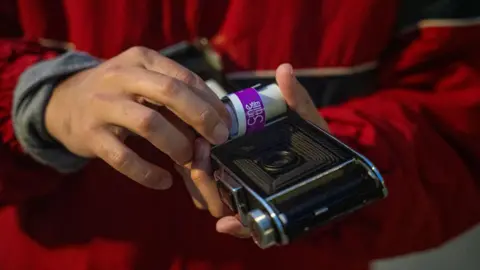 Fritz Pinau
Fritz Pinau“It all started as a little passion project,” says Fabricio Diaz, 28, who with his wife, Lucia Ramirez, 25, run Central America’s only fully operational photo film development lab from an apartment in Guatemala City.
“Now we have more than 60 customers a month and this year alone we have prepared more than 800 rolls,” he added.
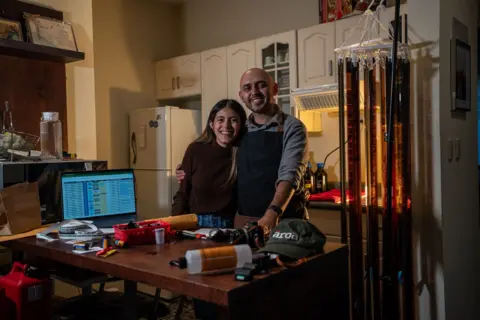 Fritz Pinau
Fritz PinauArca Film Lab was in high demand this year and is the only photo film development lab in Central America that develops every analog photographic film, including developing positives in a process known as E-6.
Fabricchio, who studied cinematography, described the lack of access to high-quality film development services in Central America as his first major push to learn how to develop his first film.
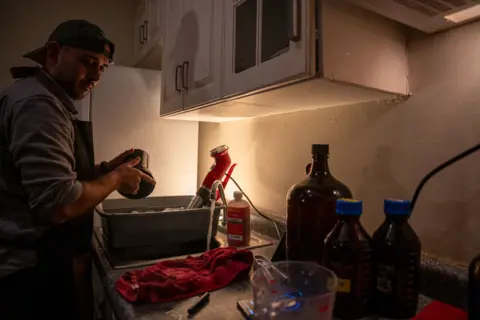 Fritz Pinau
Fritz Pinau“When we started filming and making movies in our apartment, our friends started asking us to make movies for them and everything just happened,” recalls Lucia.
And so, Arca Film Lab was born in September 2023 as a simple Instagram page offering film development services in Guatemala.
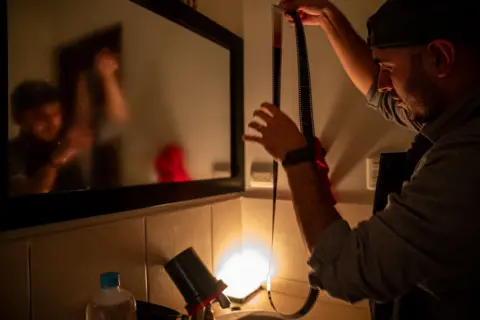 Fritz Pinau
Fritz PinauThe couple taught themselves most of the skills needed to develop a film by watching YouTube videos and reaching out to other film labs around the world and asking for tips.
“We were surprised that so many people responded to our questions. Many veterans in the world of photo development helped us by sharing their experiences and methods. We are very grateful for that,” said Fabriccio.
Fabrizio and Lucia’s love of photography is not limited to film, however. The couple organizes a “photo walk” where a group of people gather in Antigua, the old center of Guatemala City, to try and take pictures with old analog cameras.
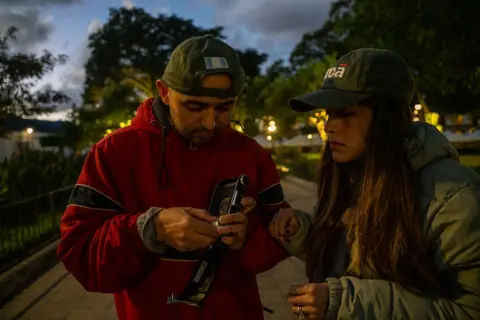 Fritz Pinau
Fritz PinauFor young analog photography enthusiasts like Ivan Ortiz, 22, taking photos with a camera that’s older than his age gives him something that modern cameras can’t match.
“It’s like we miss a generation that we never shared,” he told the BBC.
Evan said that older people don’t always get the latest news on old cameras and films. “They just don’t understand our point of view,” he explains.
“We live in a world where everything is digital and fast. With analog photography, I have to make careful decisions about my photos and just focus on the photography. And the best part of it is that you have something physical afterwards, and it’s not just another data file,” he adds. .
Having physical photos to hold is also highlighted by Steven Lopez from the US as an advantage of analogue photography.
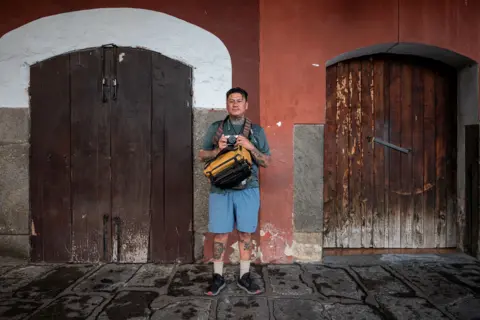 Fritz Pinau
Fritz PinauThe 33-year-old travels across Central America to document the last Mayan culture and always carries a 35mm analog camera with him.
“Photography, and especially analog photography, is the best way to document and experience cultures. Every time I come back from a trip and bring back the developed film, it’s like Christmas!” he told the BBC.
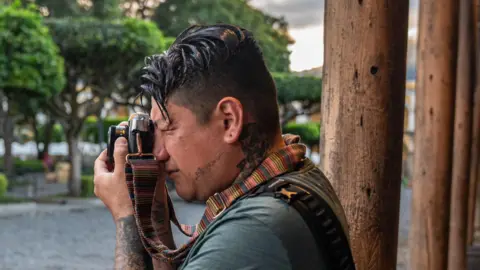 Fritz Pinau
Fritz PinauThe community of analog photography enthusiasts may be growing rapidly in Central America, but the challenges are greater than elsewhere.
“It’s hard to find analog cameras here, and it’s even harder to find them in good condition,” explained Ronald O’Toniel, 26, who went on a photo tour, buying new rolls of film to meet others. Developed.
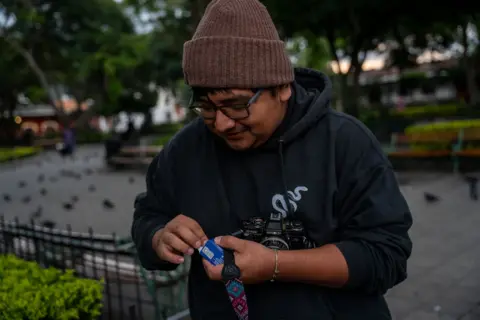 Fritz Pinau
Fritz PinauAnd there are other obstacles too.
According to Fabricchio and Lucia, the process of importing the chemicals needed to make positive film is extremely complicated because these chemicals are imported under strict government control and require special permits, making this a difficult challenge.
“Other labs don’t offer the E-6 process simply because it’s too complicated to import the chemicals,” says Fabricchio.
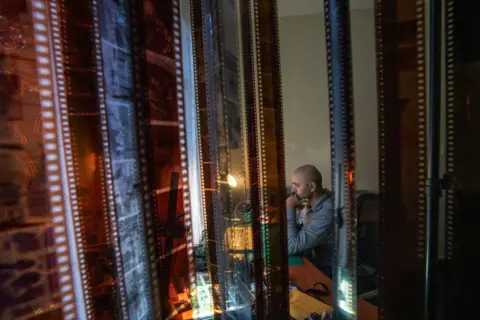 Fritz Pinau
Fritz PinauTheir business may be expanding, but Fabrizio and Lucia are determined not to lose the personal touch and passion that inspired them in the first place.
Lucia says that sometimes customers “put a little sweet in the packages they send us, and sometimes we send back a handwritten note.”
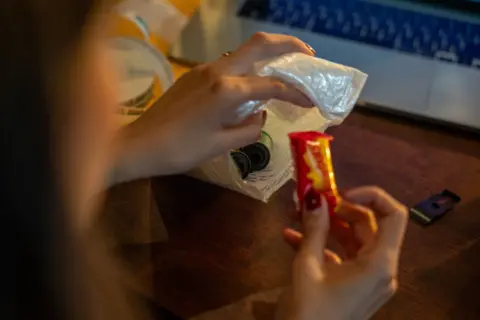 Fritz Pinau
Fritz Pinau“This is not a mass-produced business, but it is important to us that each customer is treated as an individual,” she added.
Photo labs around the world use large machines that develop the film completely automatically, but in Fabrizio and Lucia’s humble apartment the process is very “manual”.
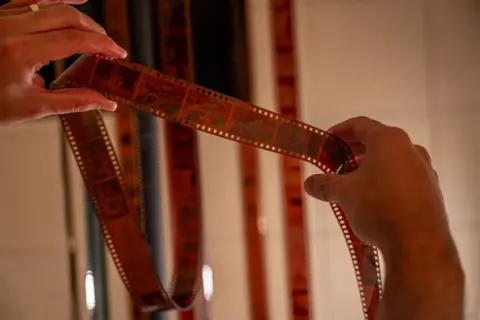 Fritz Pinau
Fritz PinauFor color and positive (E-6) film, the temperature of the chemicals and the time the film is exposed to them must be correct, otherwise, the whole film package will be bad.
“The beginning of this whole process was not easy, but after processing more than 800 rolls of film, these processes come as second nature to us,” recalls Fabriccio.
“But when we first developed the positive E-6 process, we were very nervous because we had invested a lot in chemicals and packaging. But it came out well and we were able to see these bright colors. The positive film is always very exciting,” he said.
Another important member of the Arca Film Lab is Toto, a four-month-old cat who, according to Fabrizio and Lucia, is in charge of quality control and moving throughout the entire development process.
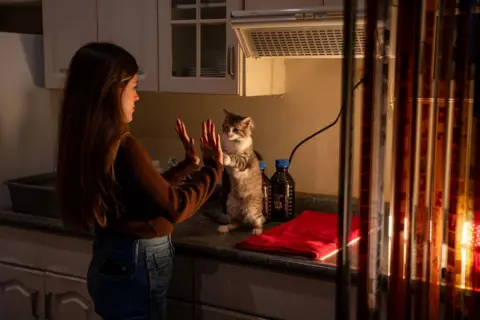 Fritz Pinau
Fritz PinauThe built-up film rolls are moved from the kitchen to the bathroom, because it is the least dusty place in the house.
There they are dried, then scanned in a high-resolution Nikon scanner, which Fabriccio says is the highest quality film scanner in Central America.
Fabrizio and Lucia regularly travel to El Salvador to collect and sell rolls of film.
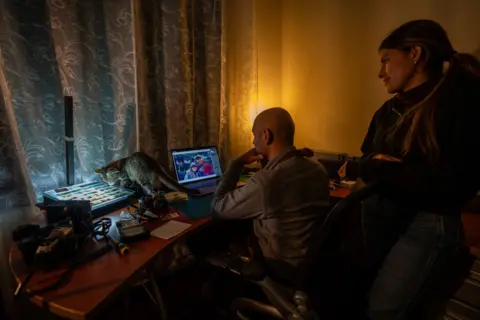 Fritz Pinau
Fritz PinauThe young couple remain ambitious and say they hope to build strong relationships with CineStill and Eastman Kodak in the future and develop cine film rolls, which includes a complex process known as ECN-2.
“It is my dream to revive the classic cinematography scene here in Central America! We have a lot of talent, knowledge and enthusiasm to present to the world. (…) with Arca Film Lab we have started a movement that we want to push further and more” says Fabriccio.
All photos courtesy of Fritz Pinnow and subject to copyright.








